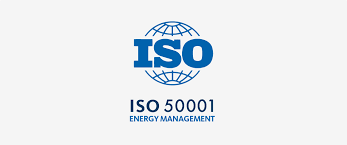In today’s rapidly evolving global landscape, businesses are increasingly recognizing the importance of sustainability and energy efficiency. The implementation of robust energy management systems (EnMS) has emerged as a pivotal strategy for organizations seeking to reduce energy consumption, minimize environmental impact, and enhance operational efficiency. Among the various standards available, ISO 50001 stands out as a comprehensive framework that provides guidelines for establishing, implementing, maintaining, and improving an EnMS. This article explores the significance of ISO 50001 in driving sustainable practices and outlines the key steps involved in its implementation.
Understanding ISO 50001
ISO 50001 is an internationally recognized standard developed by the International Organization for Standardization (ISO) to help organizations establish and maintain an EnMS. Its primary objective is to enable organizations to improve energy performance, increase energy efficiency, and reduce energy costs systematically. By providing a structured approach to energy management, ISO 50001 empowers organizations to identify, prioritize, and implement energy-saving opportunities effectively.
Benefits of Implementing ISO 50001
Implementing ISO 50001 offers numerous benefits to organizations across various sectors. These benefits include:
- Cost Savings: One of the primary advantages of ISO 50001 certification is its potential to generate significant cost savings through reduced energy consumption and improved operational efficiency. By identifying and addressing energy inefficiencies, organizations can lower their energy bills and enhance their bottom line.
- Environmental Sustainability: ISO 50001 aligns with global efforts to mitigate climate change and reduce carbon emissions. By optimizing energy usage and adopting renewable energy sources, organizations can minimize their environmental footprint and contribute to a more sustainable future.
- Regulatory Compliance: Compliance with ISO 50001 demonstrates a commitment to best practices in energy management and can help organizations meet regulatory requirements related to energy efficiency and environmental performance.
- Enhanced Reputation: ISO 50001 certification enhances an organization’s reputation as a responsible and sustainable entity. It demonstrates to stakeholders, including customers, investors, and regulators, that the organization is proactive in managing its energy resources and reducing its environmental impact.
Key Steps in Implementing ISO 50001
Implementing ISO 50001 involves a systematic approach that encompasses several key steps:
- Commitment from Top Management: The first step in implementing ISO 50001 is to secure commitment and support from top management. Senior leadership plays a crucial role in driving the implementation process and allocating resources effectively.
- Establishing an Energy Policy: Organizations must develop a clear and concise energy policy that outlines their commitment to energy management and continual improvement. The energy policy should align with the organization’s overall objectives and be communicated to all relevant stakeholders.
- Conducting Energy Reviews: Conducting comprehensive energy reviews is essential for understanding current energy usage patterns, identifying areas of inefficiency, and setting realistic targets for improvement. Energy reviews may involve energy audits, data analysis, and stakeholder consultations.
- Setting Objectives and Targets: Based on the findings of energy reviews, organizations should establish measurable objectives and targets to improve energy performance. These objectives should be specific, achievable, relevant, and time-bound (SMART) and should align with the organization’s overall energy management goals.
- Implementing Action Plans: Once objectives and targets are established, organizations must develop action plans to achieve them. Action plans should outline the specific measures, responsibilities, timelines, and resources required to implement energy-saving initiatives effectively.
- Monitoring and Measurement: Continuous monitoring and measurement of energy performance are essential for tracking progress, identifying deviations, and taking corrective actions as necessary. Organizations should establish key performance indicators (KPIs) to evaluate their energy performance regularly.
- Management Review: Regular management reviews are necessary to assess the effectiveness of the EnMS, identify opportunities for improvement, and ensure ongoing compliance with ISO 50001 requirements. Management reviews provide a platform for senior leadership to review performance data, address any issues or concerns, and make informed decisions to enhance energy management practices.
Conclusion
In conclusion, implementing an EnMS in compliance with ISO 50001 offers numerous benefits for organizations seeking to enhance sustainability, reduce costs, and improve operational efficiency. By following a systematic approach and adhering to the key steps outlined in this article, organizations can establish a robust framework for managing energy resources effectively. ISO 50001 certification not only demonstrates a commitment to best practices in energy management but also provides a competitive advantage in the marketplace. As businesses continue to prioritize sustainability and environmental stewardship, ISO 50001 will undoubtedly play a crucial role in shaping the future of energy management worldwide.



